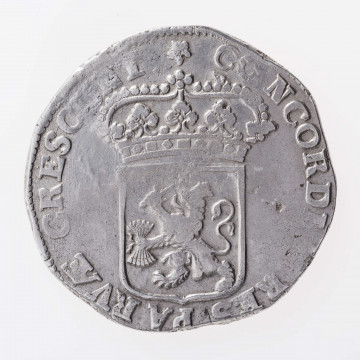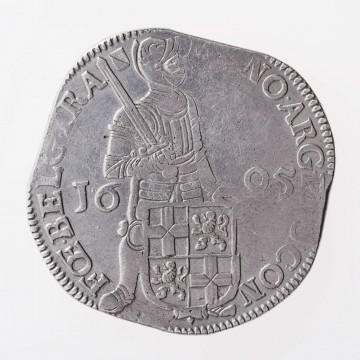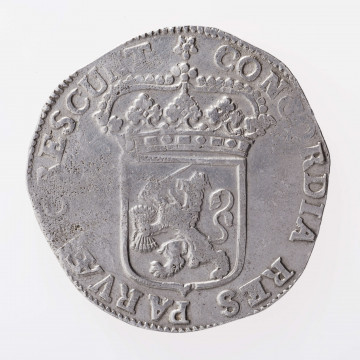
Silver ducat of the Republic of the United Provinces of the Netherlands
1695
National Museum in Lublin
Part of the collection: Money on Polish territory in the Middle Ages
After the death of Bolesław the Wrymouthed († 1138), in accordance with the previously adopted statute of succession, the territory of the Polish state was divided between his sons, of whom the eldest of the brothers, Władysław (1138-1146), was the king. The scope of his sovereign power in the country also included the exclusive right to issue money. The Statute of Succession did not, however, prevent a fratricidal struggle which broke out several years after Bolesław the Wrymouthed's death. Ladislaus was defeated by the Juniors and forced to leave the country (1146).
During his eight-year reign Władysław the Exile exchanged money at least three times. It consisted in replacing used denars with new ones, easily distinguishable due to their different images. As a kind of tax imposed on the population, the exchange was carried out at a rate favourable to the issuer (e.g., 3 new denarii for 4 old ones) and brought the ruler a substantial income.
The denarius with the representation of the ruler on the throne and the scene of the fight between the knight and the lion is connected with the beginning of this reign. On the next issue there is a prince with a shield and a sword, and St Adalbert is on the reverse. The third type is related to the previous coins by the image of a prince and a scene of a fight with a lion on the reverse. On the fourth issue, which is of interest to us here, the final scene of the duel is illustrated, in which the knight raises his sword over his defeated opponent. On the reverse, we can see a successful hunt of an eagle for a hare. The coin is dated to the years 1144-1146, which was the climax of the conflict between the senior and his younger half-brothers. The depicted scenes reflect the atmosphere of warfare prevailing in the country at that time. They can be understood as a manifestation of the superiority of the senior over his rebellious brothers.
It is not known where the knightly battle scene transferred onto the coin came from. On Czech coins from the beginning of the 11th century, which were modelled in Poland, we find a similar image. However, it does not present a knightly clash, but an execution. The representation of an eagle sticking its talons into a hare has no analogy on the coins of that period.
The coins of Władysław the Exile were minted in Cracow and circulated in Lesser Poland together with Sandomierz and Lublin lands, central Poland, Silesia and Greater Poland. They remained in use for several decades.
Tomasz Markiewicz
Author / creator
Dimensions
cały obiekt: diameter: 12,2 mm
Object type
numismatic
Technique
stamp minting
Material
silver
Creation time / dating
Creation / finding place
Owner
The National Museum in Lublin
Identification number
Location / status

1695
National Museum in Lublin

1695
National Museum in Lublin

1694
National Museum in Lublin
DISCOVER this TOPIC
Castle Museum in Łańcut
DISCOVER this PATH
Educational path